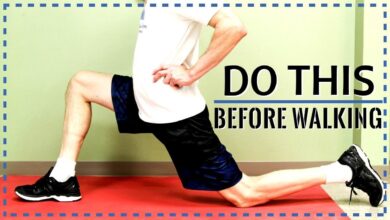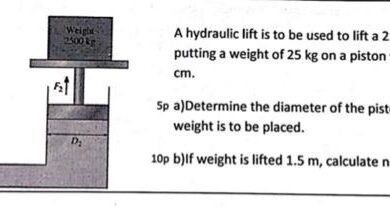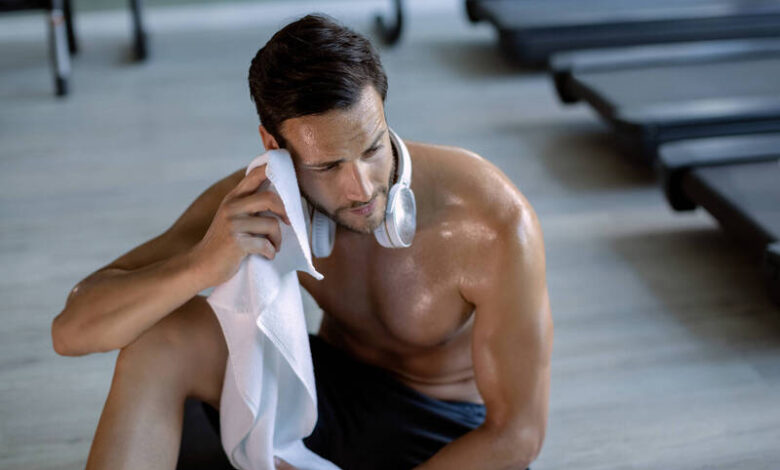
Everything You Want to Know About Sweat and Sweating
Everything you want to know about sweat and sweating – it’s a topic that often gets brushed aside, but it’s actually a fascinating and important aspect of our health and well-being. From the basic physiological processes of sweat production to the cultural perspectives on sweating, this exploration delves into the science, the social, and the personal aspects of this ubiquitous bodily function.
Sweat is more than just a sticky, sometimes smelly, byproduct of a good workout. It’s a vital mechanism for regulating our body temperature, a window into our health, and a subject that has captivated philosophers, scientists, and artists for centuries.
This blog post will take you on a journey through the world of sweat, uncovering its secrets and shedding light on its surprising role in our lives.
What is Sweat?
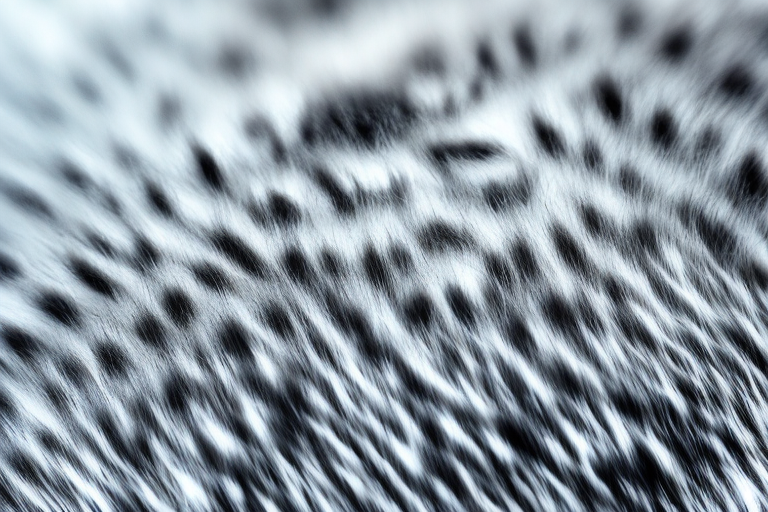
Sweat is a clear, salty fluid produced by our bodies, primarily to regulate our internal temperature. It’s a vital mechanism that helps us maintain a stable body temperature, especially during physical activity or hot weather.
Sweat Production
Sweat is produced in specialized glands called sweat glands, which are located in the skin. The process of sweat production, known as perspiration, begins in the eccrine sweat glands, the most common type of sweat gland in humans. When our body temperature rises, the hypothalamus, a part of the brain responsible for regulating body temperature, sends signals to the eccrine sweat glands to produce sweat.The eccrine sweat glands are made up of a coiled tube that extends into the dermis, the layer of skin beneath the epidermis.
This tube is lined with cells that secrete sweat, which is composed primarily of water, but also contains small amounts of electrolytes, such as sodium, chloride, and potassium. The sweat travels through the tube and then out onto the surface of the skin through a small opening called a sweat pore.
The Role of Sweat Glands in Thermoregulation
Sweat plays a crucial role in thermoregulation, the process of maintaining a stable body temperature. When our body temperature rises, our eccrine sweat glands release sweat onto the surface of our skin. As the sweat evaporates, it absorbs heat from our body, cooling us down.
This process is known as evaporative cooling.
Types of Sweat Glands, Everything you want to know about sweat and sweating
There are two main types of sweat glands in humans: eccrine and apocrine.
Eccrine Sweat Glands
Eccrine sweat glands are the most common type of sweat gland in humans. They are found all over the body, with the highest concentrations on the palms of the hands, soles of the feet, and forehead. Eccrine sweat glands are responsible for producing the sweat that helps us cool down.
Apocrine Sweat Glands
Apocrine sweat glands are located in areas of the body with a high concentration of hair follicles, such as the armpits, groin, and scalp. They produce a thicker, milky sweat that contains proteins and lipids. Apocrine sweat glands are not involved in thermoregulation; instead, they are activated by stress and emotions.
Sweating is a natural process that helps regulate body temperature, but it can also be a sign of intense exercise. When you push your muscles to their limits, you’re bound to experience some soreness afterwards. To help combat this, check out 6 remedies trainers depend on to ease sore muscles – they might just be the secret weapon you need to recover faster and get back to your workout routine.
And remember, understanding the science behind sweat and how it impacts your body can make all the difference in optimizing your training and achieving your fitness goals.
Why Do We Sweat?
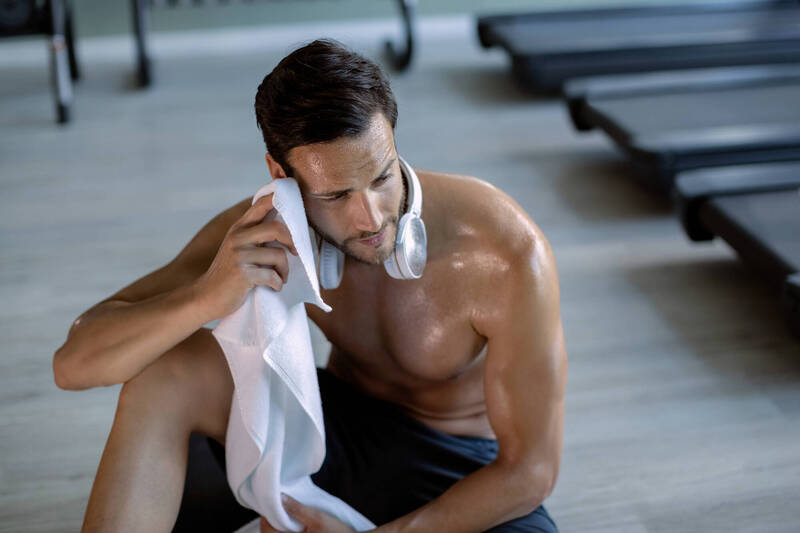
Sweating is an essential bodily function that plays a crucial role in regulating our body temperature. It is a complex process involving various physiological mechanisms that are triggered by internal and external factors. The primary reason we sweat is to maintain a stable internal temperature, ensuring our body functions optimally.
Sweating Triggers
Sweating is triggered by various factors, including exercise, heat, stress, and emotions.
- Exercise: During physical activity, our muscles work harder, generating heat as a byproduct. To prevent our body temperature from rising too high, our body starts sweating to cool down.
- Heat: When exposed to high temperatures, our body needs to dissipate excess heat. Sweating helps to cool us down by evaporating the sweat from our skin, taking heat with it.
- Stress: Our body releases hormones like adrenaline and cortisol during stressful situations. These hormones can trigger sweating, often accompanied by other physiological changes such as increased heart rate and rapid breathing.
- Emotions: Strong emotions, like fear, anxiety, or embarrassment, can also trigger sweating. This is because our nervous system reacts to these emotions by activating the sweat glands.
Body Temperature Regulation
Sweating is a crucial part of our body’s thermoregulation system, which helps maintain a stable internal temperature. When our body temperature rises, the hypothalamus, a region in the brain responsible for regulating body temperature, sends signals to the sweat glands to produce sweat.
Sweat, that salty, sometimes embarrassing bodily fluid, plays a vital role in keeping us cool and regulating our temperature. But have you ever wondered if the meat you eat, whether it’s the real deal or a plant-based alternative, impacts how much you sweat?
It’s a fascinating question, and one that leads us to another important consideration: is fake meat healthier than the real thing ? Understanding the nutritional differences between these options can help us make informed choices about our diet and overall health, which in turn can affect our sweat production and body temperature regulation.
As the sweat evaporates from our skin, it absorbs heat, thus cooling our body down. This process helps prevent overheating, which can lead to various health issues.
Types of Sweating
There are two main types of sweating: eccrine sweating and apocrine sweating.
- Eccrine sweatingis the most common type of sweating. It occurs all over our body and is primarily responsible for regulating body temperature. Eccrine sweat is clear and odorless.
- Apocrine sweatingoccurs in specific areas of the body, such as the armpits, groin, and scalp. It is thicker and contains more proteins and fats than eccrine sweat. Apocrine sweat is odorless when it is released, but bacteria on the skin can break down these proteins and fats, leading to body odor.
The Composition of Sweat
Sweat, a clear and colorless fluid secreted by our sweat glands, is primarily composed of water. However, it also contains various dissolved substances, primarily electrolytes, which play a crucial role in maintaining our body’s fluid balance and regulating temperature.
Electrolytes in Sweat
Electrolytes are minerals that carry an electric charge when dissolved in fluids like sweat. These minerals are essential for various bodily functions, including nerve and muscle function, fluid balance, and blood pressure regulation. The primary electrolytes found in sweat include:
- Sodium (Na+):The most abundant electrolyte in sweat, sodium plays a vital role in fluid balance and maintaining blood pressure. During sweating, sodium is lost from the body, leading to a potential depletion of electrolytes, especially during prolonged exercise or hot weather.
- Potassium (K+):Another essential electrolyte, potassium is crucial for muscle contraction, nerve function, and maintaining heart rhythm. While potassium is present in sweat, its concentration is lower than sodium.
- Chloride (Cl-):Chloride, like sodium, is involved in fluid balance and maintaining blood pressure. It is also essential for gastric acid production and digestion.
- Calcium (Ca2+):Calcium is vital for strong bones, muscle function, and blood clotting. However, its concentration in sweat is relatively low.
- Magnesium (Mg2+):Magnesium is essential for muscle and nerve function, blood sugar control, and bone health. Like calcium, its concentration in sweat is relatively low.
The concentration of electrolytes in sweat can vary depending on several factors, including:
- Exercise Intensity:As exercise intensity increases, sweat production rises, and electrolyte concentration in sweat also increases. This is because the body needs to flush out more electrolytes to regulate temperature and maintain fluid balance.
- Environmental Temperature:Higher temperatures trigger more sweating, leading to increased electrolyte loss. This is why it is crucial to stay hydrated in hot weather.
- Diet:A diet rich in sodium can lead to higher sodium concentration in sweat. Conversely, a diet low in sodium can result in lower sodium levels in sweat.
- Health Conditions:Certain health conditions, such as cystic fibrosis and hypokalemia (low potassium), can affect sweat composition and electrolyte levels.
Sweat and Odor
Sweat itself is odorless. The characteristic body odor we associate with sweating arises from a complex interplay of factors, primarily involving the breakdown of sweat components by bacteria residing on our skin.
Ever wondered why you sweat more during some workouts than others? It all comes down to your body’s response to exertion and heat. To really understand the science behind sweat, it’s helpful to know about the mechanics of strength training, which you can explore in this essential guide to strength training.
Understanding how your muscles work and how they respond to resistance will give you a better grasp of why your body sweats the way it does. So, whether you’re a seasoned athlete or just starting out, knowing the basics of strength training can unlock a whole new understanding of sweat and its role in your fitness journey.
Bacteria’s Role in Sweat Odor
Sweat glands release a mixture of water, salts, and organic compounds, including amino acids and fatty acids. These compounds are not inherently smelly, but when they come into contact with bacteria on the skin’s surface, they can be broken down into volatile organic compounds (VOCs).
These VOCs are responsible for the characteristic “body odor” we perceive.The types of bacteria present on our skin and the specific VOCs they produce can vary depending on factors such as genetics, diet, and hygiene. For example, some individuals may have a higher concentration of bacteria that produce strong-smelling VOCs, leading to more pronounced body odor.
Hygiene Practices and Sweat Odor
Maintaining good hygiene is crucial for minimizing sweat odor. Regularly showering or bathing helps to remove sweat, bacteria, and dead skin cells that contribute to odor.
- Frequent Showering:Showering or bathing daily, or more frequently if you sweat excessively, helps to wash away sweat and bacteria.
- Using Antibacterial Soap:Antibacterial soap can help to reduce the number of bacteria on the skin.
- Washing Clothes Regularly:Sweat-soaked clothing can harbor bacteria and contribute to odor. Wash your clothes regularly, especially those worn during exercise or in hot weather.
- Choosing Breathable Fabrics:Wearing breathable fabrics like cotton or linen allows air to circulate and helps to keep the skin dry.
Using Antiperspirants
Antiperspirants are designed to reduce sweat production, which in turn can help to minimize body odor. Antiperspirants contain aluminum salts that temporarily block sweat ducts, reducing the amount of sweat that reaches the skin’s surface.
- Applying Antiperspirant Regularly:Apply antiperspirant to clean, dry skin, preferably at night before bed, as this allows the aluminum salts to work effectively.
- Choosing the Right Antiperspirant:Antiperspirants come in various strengths and formulations. Choose an antiperspirant that is appropriate for your level of sweating and skin sensitivity.
- Using Deodorants:Deodorants do not reduce sweat production but rather mask odor by using fragrances. Deodorants can be used in conjunction with antiperspirants for added odor control.
Sweat and Exercise
Sweat plays a crucial role in regulating body temperature during physical activity. As exercise intensity increases, so does our body’s need to cool down. This is where sweat comes in.
The Relationship Between Exercise Intensity and Sweat Production
The amount of sweat we produce is directly related to the intensity and duration of our workout. The harder we exercise, the more our core body temperature rises, triggering our sweat glands to work harder. This increased sweat production helps to cool us down by evaporating from our skin, taking heat with it.
For example, a light jog might only result in a light sweat, while a strenuous interval training session would likely produce a significant amount of sweat.
Hydration During Exercise and the Role of Sweat in Fluid Loss
Staying hydrated during exercise is essential, especially considering the role sweat plays in fluid loss. During exercise, our bodies lose fluids through sweat, which can lead to dehydration if we don’t replenish them. Dehydration can lead to fatigue, decreased performance, and even heat exhaustion or heat stroke in severe cases.
The amount of fluid lost through sweat can vary depending on factors such as exercise intensity, environmental temperature and humidity, and individual fitness levels.
Strategies for Optimizing Hydration and Minimizing Sweat-Related Discomfort During Workouts
Several strategies can help us optimize hydration and minimize sweat-related discomfort during exercise:
- Drink water before, during, and after exercise: It is important to start exercising well-hydrated and to continue replenishing fluids throughout the workout. Aim to drink water every 15-20 minutes during exercise, even if you don’t feel thirsty.
- Choose the right clothing: Wearing breathable, moisture-wicking fabrics can help to keep us cool and dry during exercise. Avoid wearing cotton clothing, as it tends to absorb sweat and stay wet, which can make us feel uncomfortable.
- Consider using an electrolyte drink: Electrolyte drinks can help to replenish the minerals lost through sweat, particularly sodium, potassium, and magnesium. This can be especially helpful during long or intense workouts.
- Listen to your body: If you feel lightheaded, dizzy, or nauseous during exercise, stop immediately and rest in a cool place. These are signs of dehydration, and it’s important to rehydrate as soon as possible.
Ultimate Conclusion: Everything You Want To Know About Sweat And Sweating
From the intricate workings of our sweat glands to the cultural interpretations of sweat, we’ve explored a wide range of topics related to this essential bodily function. Understanding sweat is not just about hygiene or avoiding embarrassing situations, it’s about appreciating the remarkable complexity of our bodies and the intricate ways they keep us alive and functioning.
So next time you feel a bead of sweat forming, take a moment to marvel at the fascinating process that’s keeping you cool, healthy, and alive.

